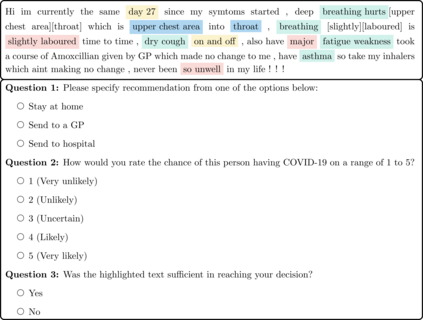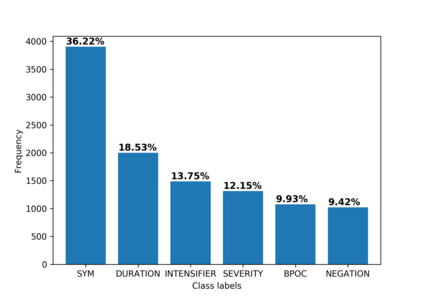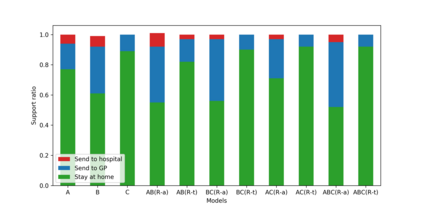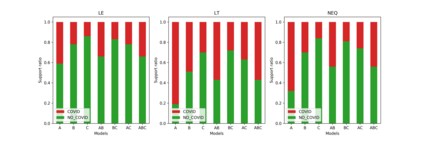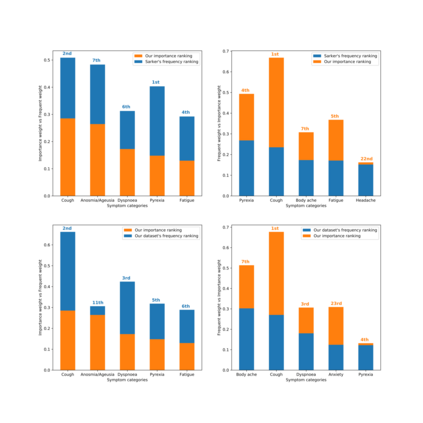Objective: This study aims to develop an end-to-end natural language processing pipeline for triage and diagnosis of COVID-19 from patient-authored social media posts, in order to provide researchers and other interested parties with additional information on the symptoms, severity and prevalence of the disease. Materials and Methods: The text processing pipeline first extracts COVID-19 symptoms and related concepts such as severity, duration, negations, and body parts from patients posts using conditional random fields. An unsupervised rule-based algorithm is then applied to establish relations between concepts in the next step of the pipeline. The extracted concepts and relations are subsequently used to construct two different vector representations of each post. These vectors are applied separately to build support vector machine learning models to triage patients into three categories and diagnose them for COVID-19. Results: We report that macro- and micro-averaged F1 scores in the range of 71-96% and 61-87%, respectively, for the triage and diagnosis of COVID-19, when the models are trained on human labelled data. Our experimental results indicate that similar performance can be achieved when the models are trained using predicted labels from concept extraction and rule-based classifiers, thus yielding end-to-end machine learning. Also, we highlight important features uncovered by our diagnostic machine learning models and compare them with the most frequent symptoms revealed in another COVID-19 dataset. In particular, we found that the most important features are not always the most frequent ones.
翻译:本研究的目标是:开发一端到端的自然语言处理管道,从病人使用的社交媒体站点对COVID-19进行分级和诊断,以便向研究人员和其他有关各方提供关于该疾病的症状、严重程度和流行程度的更多信息。材料和方法:文本处理管道首先提取COVID-19症状和相关概念,例如严重性、持续性、否定性、以及使用有条件随机字段的病人站点的器官部分等。然后采用不受监督的基于规则的算法,在输油管线的下一步骤中建立概念之间的关系。提取的概念和关系随后被用来建立两个不同的矢量表示。这些矢量分别用于建立支持病媒机学习模型,将病人分为三类,并为COVI-19诊断。结果:我们报告说,在对COVI-19进行三角和诊断时,分别使用71-96%和61-87%的宏观和微观平均F1评分,这些模型总是以人类标签数据为基础。我们的实验结果表明,在对模型进行最经常的标签进行对比时,可以实现类似的业绩,我们用最经常的标签进行对比,从而通过机器的诊断性分析模型来学习。

